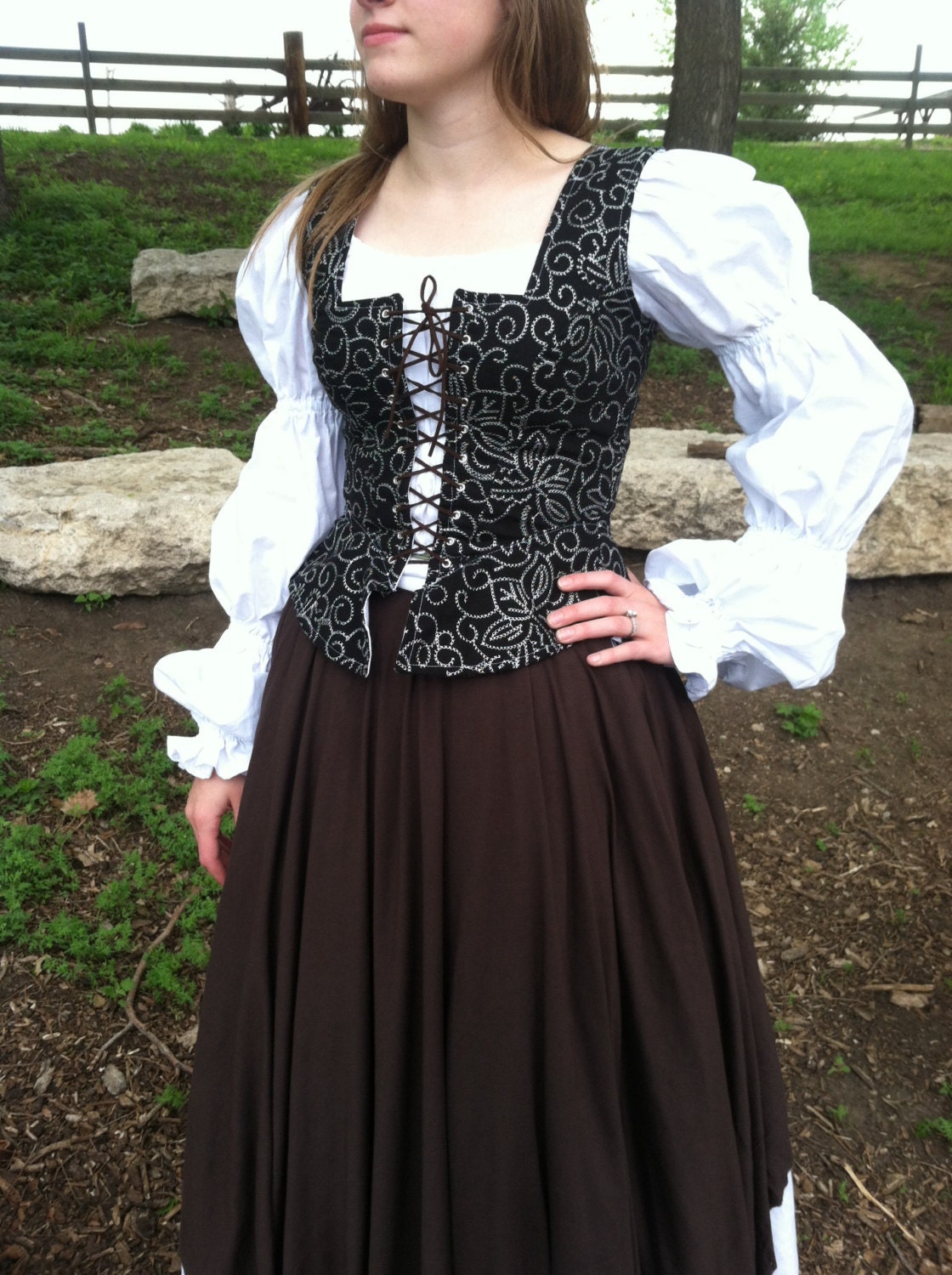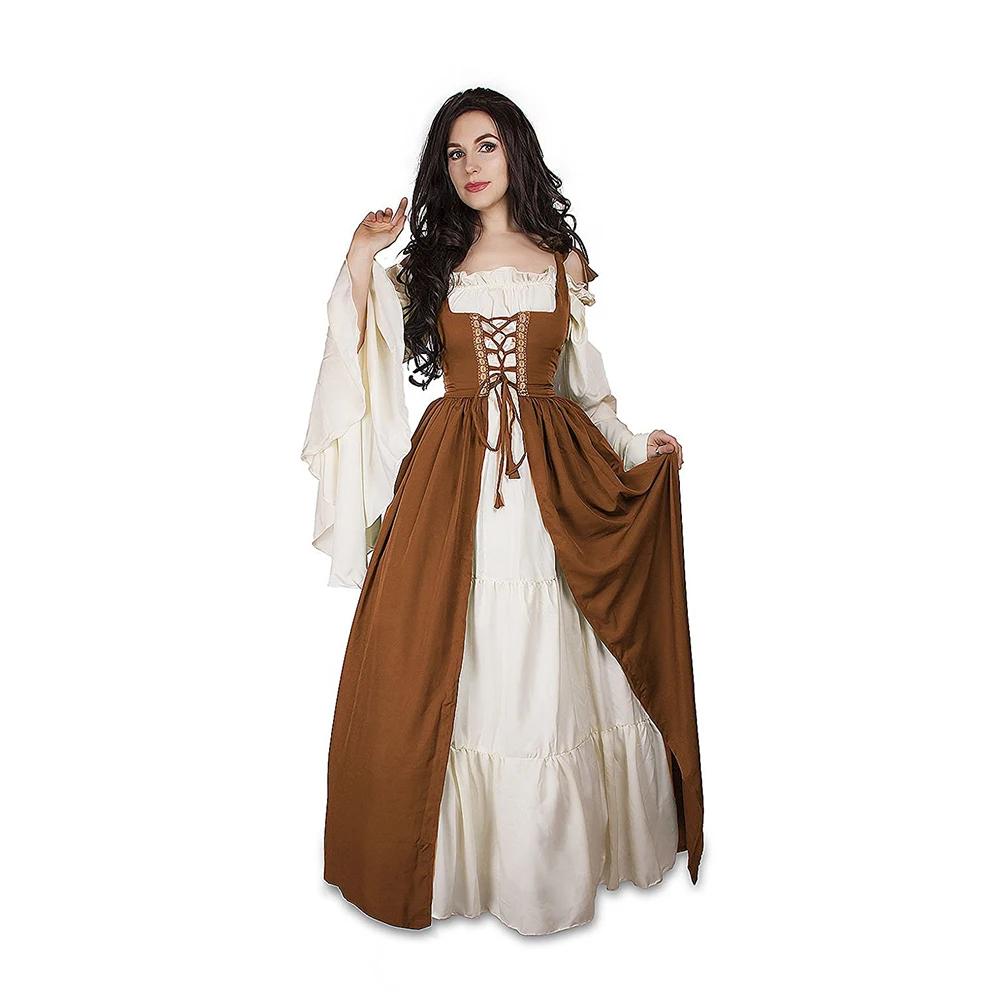
MEDIEVAL OUTFITS FREE
The inelastic materials hitherto employed impeded the free movement of the limbs and made it almost impossible for the wearer to sit down. This new practice, however, was attended by great difficulties. Till now the hose had always been separate, but about this time it became the fashion to join them at the top, thus making actual trousers, which covered not only the legs, but also the lower part of the trunk. This period saw a great improvement in the dress for the lower limbs, called les chausses. Small, round or slightly conical caps with rolled brims were worn, and straw hats were worn for outdoor work in summer.Note: Italian gothic costumes 15th century. The chaperon in the form of hood and attached shoulder-length cape was worn during this period, especially by the rural lower classes, and the fitted linen coif tied under the chin appeared very late in the century. However, rural lower classes had a few hats to choose from. Men of the upper classes often went hatless.


In England, however, leg bands continued to be worn by some people, both rich and poor, right up to the reign of Richard I. The better fit and girdle attachment of this new hose eliminated the need for the leg bands often worn with earlier hose. The indoor shoes were covered with wooden and leather outdoor overshoes. The shoes they wore were designed for castle wear only and made of silk, velvet, cloth or leather and fastened with a buckle. Married women, in keeping with Christian custom, wore veils over their hair, which was often parted in the center and hung down in long braids that might be extended with false hair or purchased hair from the dead, a habit decried by moralists. In England, the fashionable gown was wide at the wrist but without the trumpet-shaped flare from the elbow seen in France. The cincture could have decorative tassels or metal tags at the ends. The fitted bliaut was sometimes worn with a long belt or cincture (in French, ceinture) that looped around a slightly raised waist and was knotted over the abdomen. A new fashion, the bliaut girone, arose in mid-century: This gown is cut in two pieces, a fitted upper portion with a finely pleated skirt attached to a low waistband. Maurice at Angers has visible side lacing and is belted at the natural waistline. A bliaut, apparently cut in one piece from neckline to hem, depicted on a column figure of a woman at the Cathedral of St. The bliaut had a flaring skirt and sleeves tight to the elbow and then widening to wrist in a trumpet shape.
MEDIEVAL OUTFITS FULL
Women of the French court wore a loosely fitted tunic called a cotte or the form-fitting bliaut over a full chemise with tight sleeves. Working class women wore ankle-length tunics belted at the waist. Over the chemise, women wore one or more ankle-to-floor length tunics (also called gowns or kirtles). Women’s clothing consisted of an undertunic called a chemise, chainse or smock. They were held up in place by being attached to the girdle of the drawers. The new type of hose was worn with drawers that reached the knees or above, and they were wide enough at the top to allow the drawers to be tucked into them.

Previously, they were looser and worn with drawers that ranged from knee- to ankle-length. Striped hose were popular.ĭuring this period, beginning with the middle and upper classes, hose became longer and more fitting, and they reached above the knees. Tailored cloth leggings, called chausses or hose, made as separate garments for each leg were often worn with the tunic. Underclothes consisted of an inner tunic (French chainse) or shirt with long, tight sleeves, and drawers or braies, usually of linen.

Men’s ClothingĪs in the previous centuries, two styles of dress existed side-by-side for men: a short (knee-length) costume deriving from a melding of the everyday dress of the later Roman Empire and the short tunics worn by the invading barbarians, and a long (ankle-length) costume descended from the clothing of the Roman upper classes and influenced by Byzantine dress. Vair, the fur of the squirrel, was particularly popular and is shown in many illuminated manuscript illustrations as a white and blue-grey softly striped or checkered pattern lining the mantles of the wealthy.
MEDIEVAL OUTFITS SKIN
Linen undergarments, which were more comfortable against the skin and could be washed and then bleached in the sun, were increasingly worn.įur was worn as an inside lining for warmth. In the last decade of the previous century, the Norman reconquest of Sicily and the First Crusade had opened additional routes for Eastern fabrics and style influences into Europe.ĭespite the importing of new fabrics, wool remained the primary fabric for clothing of all classes. Silks from Byzantine traded in Pavia by way of Venice, and silks from Andalusia reached France via Spain. Silk, although extremely expensive, was readily available to wealthy people of consequence.


 0 kommentar(er)
0 kommentar(er)
